That, says Priti Paul, is where Indian tea needs to be, and where it’s not.
“India is the first tea capital in the world, but we do not claim that title. Instead, we let England claim it, though they just package the tea,” says Paul, founder of Cha Bar, the country’s first dedicated tea café that opened in 2000.
A complex brew of factors, from policy to perception, has kept Indian tea from being a global brand. This, despite India being the second largest producer of tea globally and the largest producer of black tea — the kind that is used in blends, tea bags and masala chai.
India, along with China, is where the story of tea began. It is here that the Europeans first developed a taste for tea about 400 years ago. In 2024, India’s production of 1,285 million kg was second to China’s 3,700. But the bulk of India’s production was consumed at home, with exports at a mere 254.6 million kg or nearly 20%. To top it, whatever went out into global markets didn’t have an India tag – the tea, unbranded and sold in bulk, is usually sold as blends, where different tea types are mixed to create a new blend. For instance, Assam tea is blended with teas from Sri Lanka and Kenya to create English breakfast tea, one of the world’s most popular blends. Also, some Earl Grey blends mix Darjeeling or Nilgiri tea from India with Chinese Keemun tea. Industry experts say almost 90% of Indian tea that’s consumed both domestically and abroad is blended.
Indian tea, as a brand, therefore, rarely received the global recognition that Chinese tea or even Sri Lankan tea has acquired over the years.
Rudra Chatterjee, 48, hopes he may have taken a step towards changing that. Managing Director of Luxmi Tea Group, a 112-year-old company that his grandfather P C Chatterjee founded to challenge British hegemony over the tea industry, Chatterjee earlier this year acquired a majority stake in Brew Tea Co, a UK-based brand.
Story continues below this ad
Sipping a cup of steaming Makaibari — a Darjeeling tea estate that the group acquired in 2014 — Chatterjee says he is a strong believer that tea growers themselves need to bring Indian brands to the world stage. His brands, Luxmi Estates and Makaibari, have already made their way to consumers in the US, UK and Japan through online marketing and retail outlets.
Back home, his company has established 100 retail outlets of Makaibari Tea. Last year, he says, he opened an exclusive boutique store inside Taj Bengal, designed to evoke the experience of drinking tea in a planter’s bungalow.
“Indian tea growers have to pack their own tea and put them on the shelves. How else will the world know that our tea is the best?”
But it may be easier said than done. Only two other India tea companies have dreamt of going global — the Tatas, who purchased the British tea brand Tetley in 2000, and the Apeejay Surrendra Group that acquired the 120-year-old UK-based Typhoo tea company in 2005 but ended up selling its stake in 2021 on account of losses.
Story continues below this ad
In the global market, Indian tea faces a host of challenges – from lack of innovation to competition from African variants, from labour shortage that has plagued large estates to the emergence of a large, unorganised sector. At home, it is thwarted by distinct cultural factors.
 Last year Luxmi Tea opened an exclusive boutique store inside Taj Bengal, designed to evoke the experience of drinking tea in a planter’s bungalow. (Express photo by Partha Paul)
Last year Luxmi Tea opened an exclusive boutique store inside Taj Bengal, designed to evoke the experience of drinking tea in a planter’s bungalow. (Express photo by Partha Paul)
Nitin Saluja found himself dealing with some of these challenges in 2012, when he founded Chaayos, now a popular tea cafe chain. “Unlike coffee, which was marketed as aspirational, almost a lifestyle choice, chai was already in every Indian house, office and street corner. It was never seen as something you ‘brand’ — it was just a part of who we were. Because it was everywhere, nobody thought of elevating the experience.”
Indian coffee, meanwhile, had a different trajectory. With a far smaller production basket (360.5 million kg in 2024, as per the Coffee Board of India) when compared to tea, the brew has always been associated with sophistication and exclusivity, an image reinforced by high-end coffee bars.
The tea auctions
Six years after Scottish trader-mercenary Robert Bruce discovered wild tea grown by the Singpho tribe in Assam in 1823, a group of English gentlemen set up India’s first tea company, the Assam Company India Limited, in 1839. This led to a break in English imports of tea from China and introduced ‘empire’ tea into London’s markets.
Story continues below this ad
To bridge the gap between the market in Britain and the estates in Assam and North Bengal, the British devised an auction system, as part of which the produce would be transported to auction houses in London, from where buyers purchased it. Some of the auctions eventually moved to India, with the first one being held in Calcutta on December 27, 1861.
While the British auction of tea gradually came to an end — first when major tea-producing nations like India gained Independence and then with the emergence of international trading and Internet sales – in India, the system continued. It is currently the only agricultural produce in the country that’s sold through an institutionalised auction system. The auctions are regulated by the Tea Board of India, which mandates that estates have to sell at least 50% of their produce through public auction centres.
Arijit Dasgupta, Director, J Thomas & Company, India’s first tea auction house, says the biggest advantage of the system is that the producer gets a “global reach” by sending his tea to a single auction centre. “Moreover, whatever price we finally sell at is presumed to be a fair price, both for the producer and the buyer,” he says.
 The journey of tea from producer to consumer. (Abhishek Mitra)
The journey of tea from producer to consumer. (Abhishek Mitra)
Many, however, see the auction system and the dependence on the Tea Board as among the biggest factors that have hampered the growth of the tea industry.
Story continues below this ad
Sunil Sivaraman, a retired senior official of the Wayanad-based Parisons tea estate, points out that until 1996, coffee too was auctioned through the Coffee Board. “That resulted in a similar sort of sluggishness among coffee growers. The system was abolished in 1996 and that allowed growers to sell their coffee directly in the domestic market or to exporters. The dependence on the Tea Board is not helping the cause of tea,” he says.
Officials at the Tea Board of India did not respond to questions on the subject.
Krishan Katyal, former chairperson of J Thomas and Company, says that despite the Tea Board’s mandate, most producers prefer to sell in the open market, which often offers higher prices and a better platform for their tea. In the latest auction held at a leading auction house this week, for instance, tea from the Halmari Tea Estate in Assam was sold at Rs 466 per kg. On their website, however, their tea is priced between Rs 2,000 and 4,000 a kg.
“Tragically, the auction is treated as a dumping ground for the tea that producers can’t sell on their own,” says Katyal.
Story continues below this ad
Prabhat Bezbaruah, former chairman of the Tea Board, believes there should be an all or nothing mandate on tea auctions. “Either mandate all teas to be sold through auctions or close down government-run auctions completely. Apart from the fact that the two systems are cannibalising and undermining each other, the fact that auctions exist has made the players complacent because they always had a fallback method of disposing of their produce,” he says.
While saying the Tea Board needs to find creative ways to back Indian tea, most stakeholders make comparisons with Sri Lankan tea, which has been actively promoted by the country’s Tea Board since the 1980s.
Tea exported from Sri Lanka carries a distinct lion logo created by the country’s Tea Board to distinguish its tea from blended or foreign teas. In contrast, Indian tea is mainly sold after blending it with teas from around the world, thereby stripping it off its individual identity.
“The Sri Lankan tea board incentivised tea growers of different sizes to become tea packers,” says Angshuman Kanoria, a Kolkata-based tea exporter and owner of Balaji Agro International Goomtee Tea Estate.
Story continues below this ad
While Sri Lanka exports 70 per cent of its tea in consumer packs, Indian exports of tea are in bulk – packages that are bigger than 25 kg.
“We don’t send out retail or consumer packs, which is a terrible disadvantage. We hardly have any brands. Most of the tea is exported in the same packet in which it was packaged in the tea garden,” says Bezbaruah, the former Tea Board chairman.
 Tea on display at Makaibari Taj Bengal. (Express photo by Partha Paul)
Tea on display at Makaibari Taj Bengal. (Express photo by Partha Paul)
There are other factors that have stymied the growth story of Indian tea – from climate change to larger geopolitical ones such as the fall of the Soviet Union, once the largest buyer of Indian tea.
The collapse of the Soviet Union and the competitive market in post-liberalised India meant that tea producers suddenly had to find new ways to establish themselves. The emergence of new players such as Kenya didn’t help their cause.
Story continues below this ad
Kalyan Sundaram, secretary, Calcutta Tea Traders Association (CTTA), explains that until a few decades ago, almost 100% of tea consumed in Britain would have been Indian tea blends. Presently, Kenya accounts for almost half of the tea consumed in the UK.
One big reason for this takeover, says Prabir Kumar Bhattacharjee, secretary-general of the Tea Association of India (TAI), is that Kenya, unlike India, does not have a domestic market for tea. “Which is why, almost 95% of the tea produced in Kenya is exported to international markets,” he says.
Back home, some tepid tea
Despite the large domestic market for tea, most brands – apart from big players such as Tata and Brooke Bond – only have small, regional presence. Kailash Khandelwal, CEO, Bengal Tea and Fabrics, attributes this to cultural factors.
“For a long time in India, loose tea would be purchased in bulk and sold directly to consumers. Most consumers thought that packaged tea was unnecessarily expensive,” Khandelwal says.
The rapid growth of small tea growers – cultivation up to 25 acres – since the 1990s was another challenge for producers in the organised sector. By 2021, such growers were contributing over 50% of India’s total tea production.
While all big tea gardens are covered under the Plantation Labour Act, which mandates them to pay a standard wage and provide housing and other welfare facilities to the workers, the rules don’t apply to small growers. “Consequently, the cost of production is extremely low, so they can sell it at a much cheaper price,” says exporter Kanoria, adding that this unregulated sector doesn’t help the larger Indian brand.
Achinto Roy, a senior management lecturer at the Deakin Business School in Australia who has researched the tea industry extensively, says some of the blame falls on India’s tea industry and its “poor leadership”.
“The reason why most producers refuse to innovate and go global is because it would immediately raise concerns about working conditions on their estates. Tea plucking is back-breaking work and the workers are often exploited. Over the years, there has hardly been any innovation in the management of employees and their equipment,” he says.
The poor working conditions on tea estates, coupled with successive rounds of protests by workers, have led to labour shortages and the shutting down or suspension of operations at several estates.
Sanjay Kapoor, owner, Sancha Tea Boutique, says, “In the 1970s, the Nilgiris had 42 estates; the figure is down to 25 today. Gardens are shutting down in Assam and Darjeeling too. It is a real crisis.”
The coffee way
In the 1990s, when Priti Paul first conceived of Cha Bar, she remembers being “vehemently” dissuaded. “Everyone said no one would pay for tea outside when they can easily have it at home for free,” she recalls.
Undeterred, she opened her first Cha Bar on the first floor of the Oxford Bookstore in Kolkata’s Park Street. The set-up – a large table with different varieties of teas, tea pots, cups and some cookies – ran on an honour system: customers would pour themselves a cup of tea they liked, enjoy it while browsing the books and pay Rs 3 on their way out.
Paul’s idea of bringing tea out of Indian homes to a book café clicked. Over the next few years, she opened outlets in Mumbai, Delhi, Bhubaneswar, besides expanding the one in Kolkata.
“Affordability was a big factor that played out in my favour. Tea is a daily habit. I was keen on making it affordable so that it could be a luxury that everyone could enjoy,” she says.
When Paul began her experiments with tea cafés, coffee was far from turning into the rage that it has over the last few years. Though the tea café culture predates that of coffee, the latter has taken over rather quickly. Tea, she says, suffers from an image crisis – largely believed to be an old-fashioned beverage consumed at home and by the elderly. Does tea then need to mimic coffee?
“Not at all,” asserts Paul. “We are a nation of tea-drinkers. We need not change people’s habits. Instead, tea cafés are nurturing a habit we have had for centuries.”
It’s what the likes of Chaayos, Chai Point and MBA Chaiwala are attempting too.
 Paul’s idea of bringing tea out of Indian homes to a book café clicked. Over the next few years, she opened outlets in Mumbai, Delhi, Bhubaneswar, besides expanding the one in Kolkata. (Express photo by Partha Paul)
Paul’s idea of bringing tea out of Indian homes to a book café clicked. Over the next few years, she opened outlets in Mumbai, Delhi, Bhubaneswar, besides expanding the one in Kolkata. (Express photo by Partha Paul)
Saluja of Chaayos says, “Chai cafés are an outcome of coffee cafés not living up to the expectations in large parts of India. Customers feel relaxed at Chaayos, whereas they feel pretentious at coffee cafés.”
He says he realised that people wanted the comfort of home-made tea in a new setting — a void that Chaayos seeks to fill. Over a decade, he has opened more than 200 outlets across India.
Sharing his vision of going global soon, Saluja says, “Chai is India’s gift to the world. We believe people everywhere deserve to experience it the way we do: a drink, an emotion, a ritual, a comfort.”
Kapoor’s Sancha Tea Boutique goes further – his black tea packets come with “health messages”. “That is the bare minimum we can do. But we need a mega campaign, one that is done by the Tea Board,” he says.
Paul, however, believes it’s up to the industry to rebrand itself. “There are a million examples of old products rebranding themselves. Take for instance, gin, which is having a moment of resurgence right now. Tea as an industry has stopped doing that. We need to do that.”

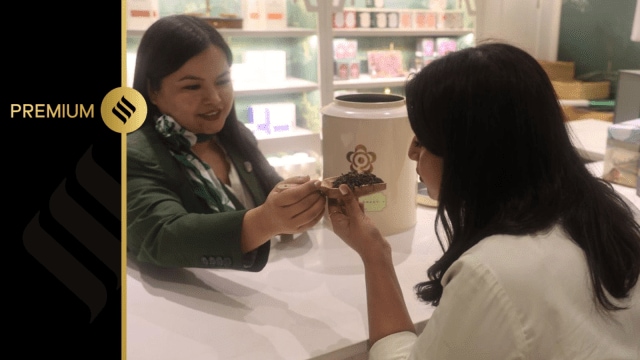

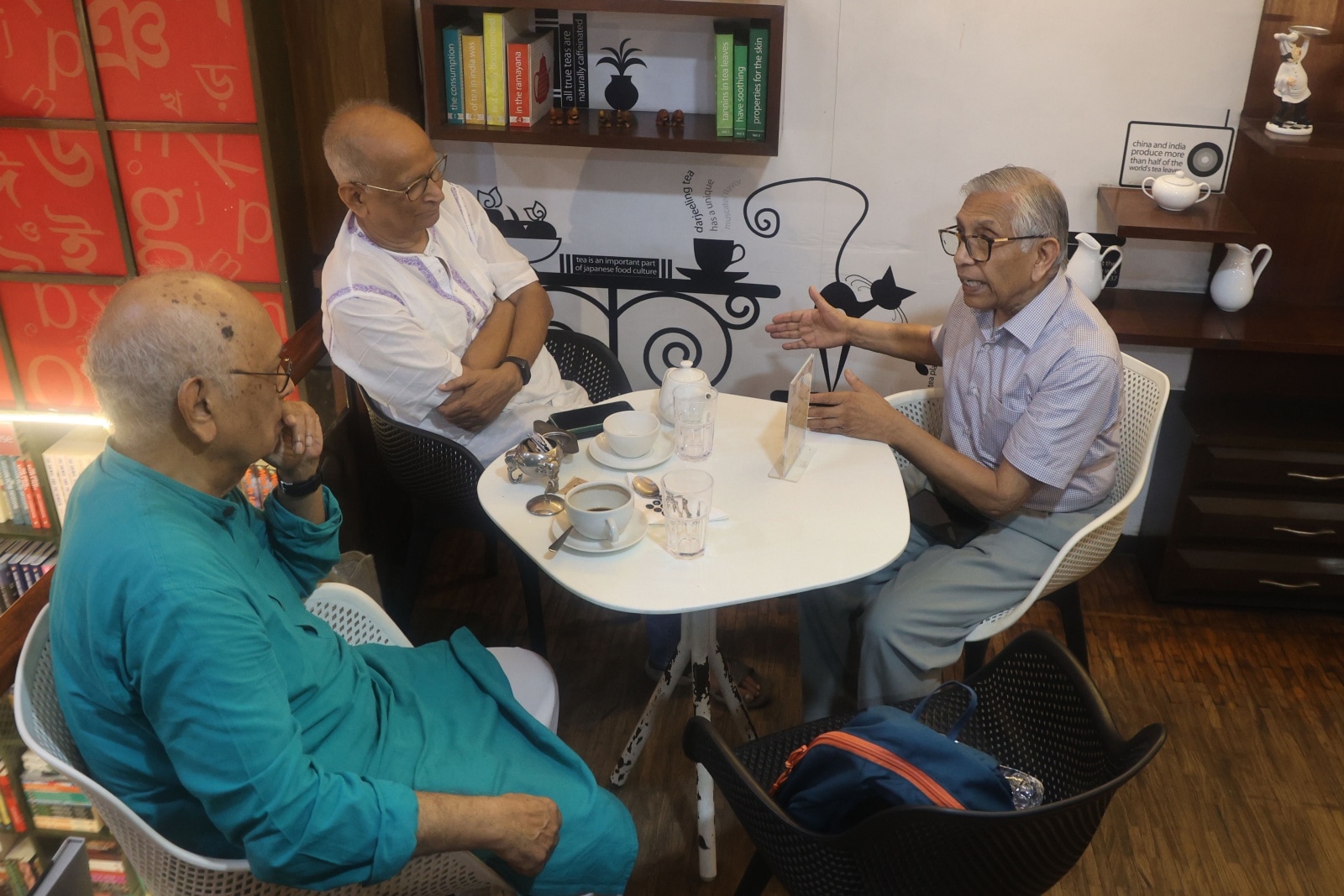 India’s first dedicated tea cafe, Cha Bar opened in Kolkata in 2000 (Express photo by Partha Paul)
India’s first dedicated tea cafe, Cha Bar opened in Kolkata in 2000 (Express photo by Partha Paul)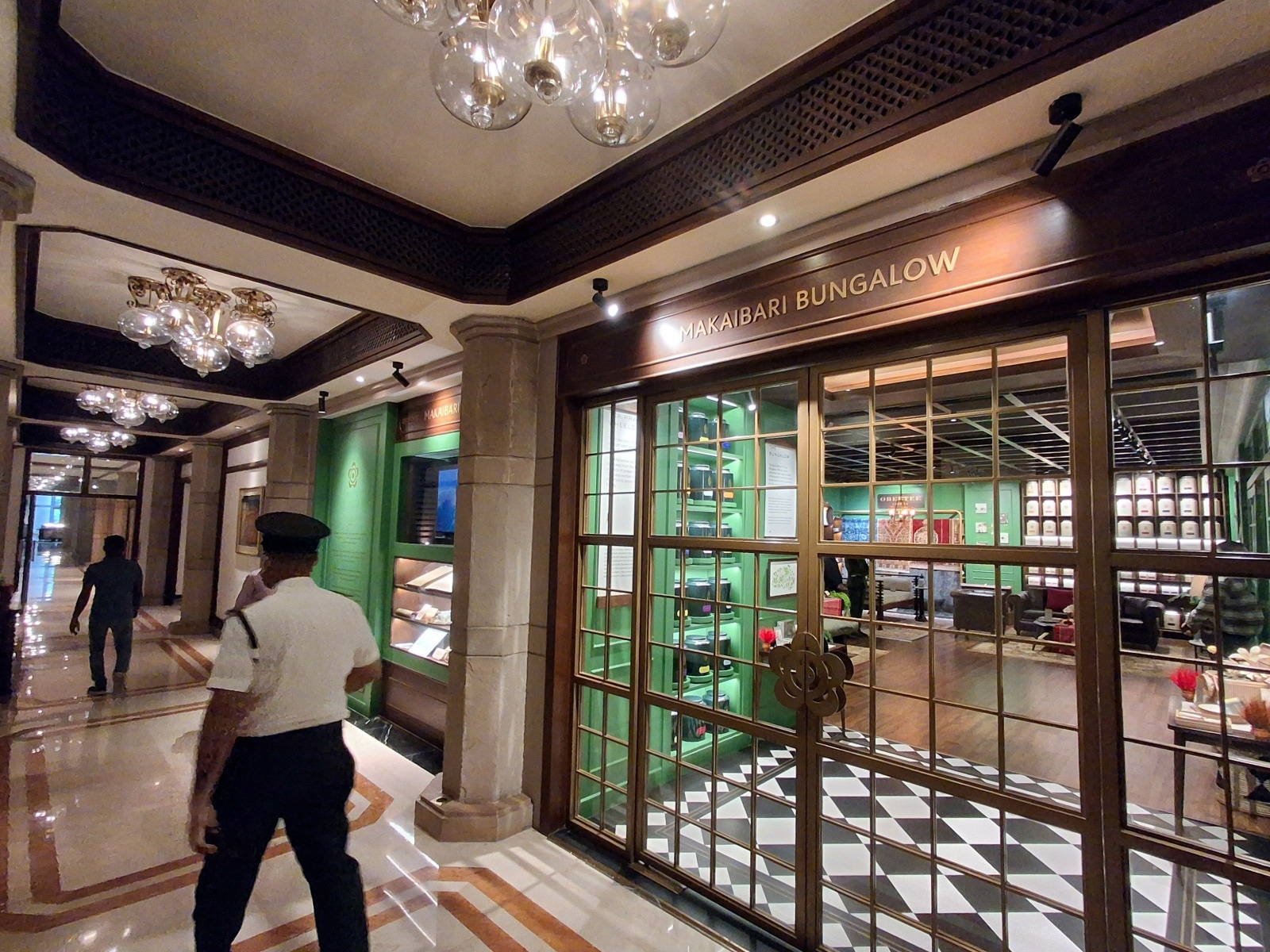 Last year Luxmi Tea opened an exclusive boutique store inside Taj Bengal, designed to evoke the experience of drinking tea in a planter’s bungalow. (Express photo by Partha Paul)
Last year Luxmi Tea opened an exclusive boutique store inside Taj Bengal, designed to evoke the experience of drinking tea in a planter’s bungalow. (Express photo by Partha Paul)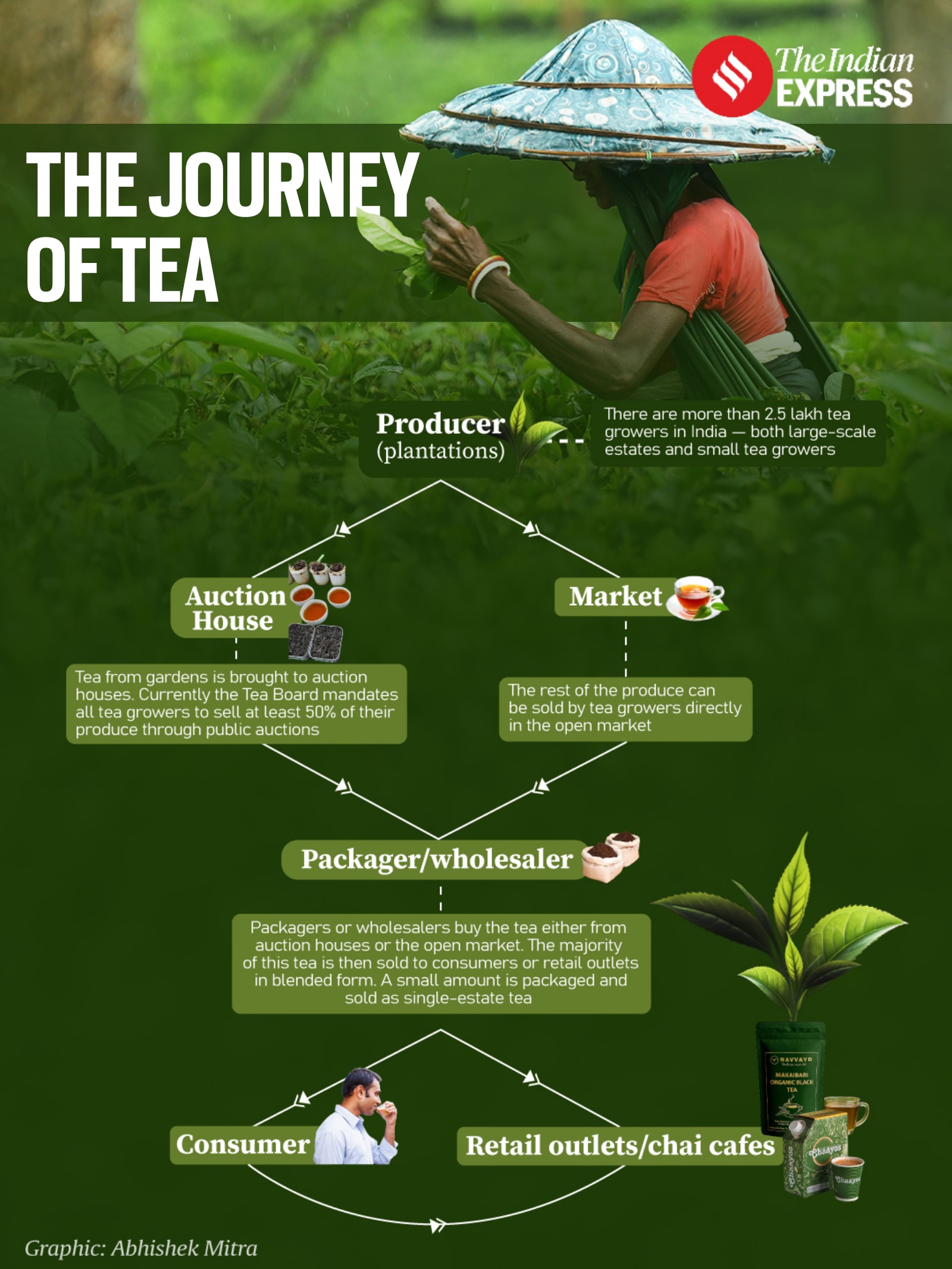 The journey of tea from producer to consumer. (Abhishek Mitra)
The journey of tea from producer to consumer. (Abhishek Mitra) Tea on display at Makaibari Taj Bengal. (Express photo by Partha Paul)
Tea on display at Makaibari Taj Bengal. (Express photo by Partha Paul)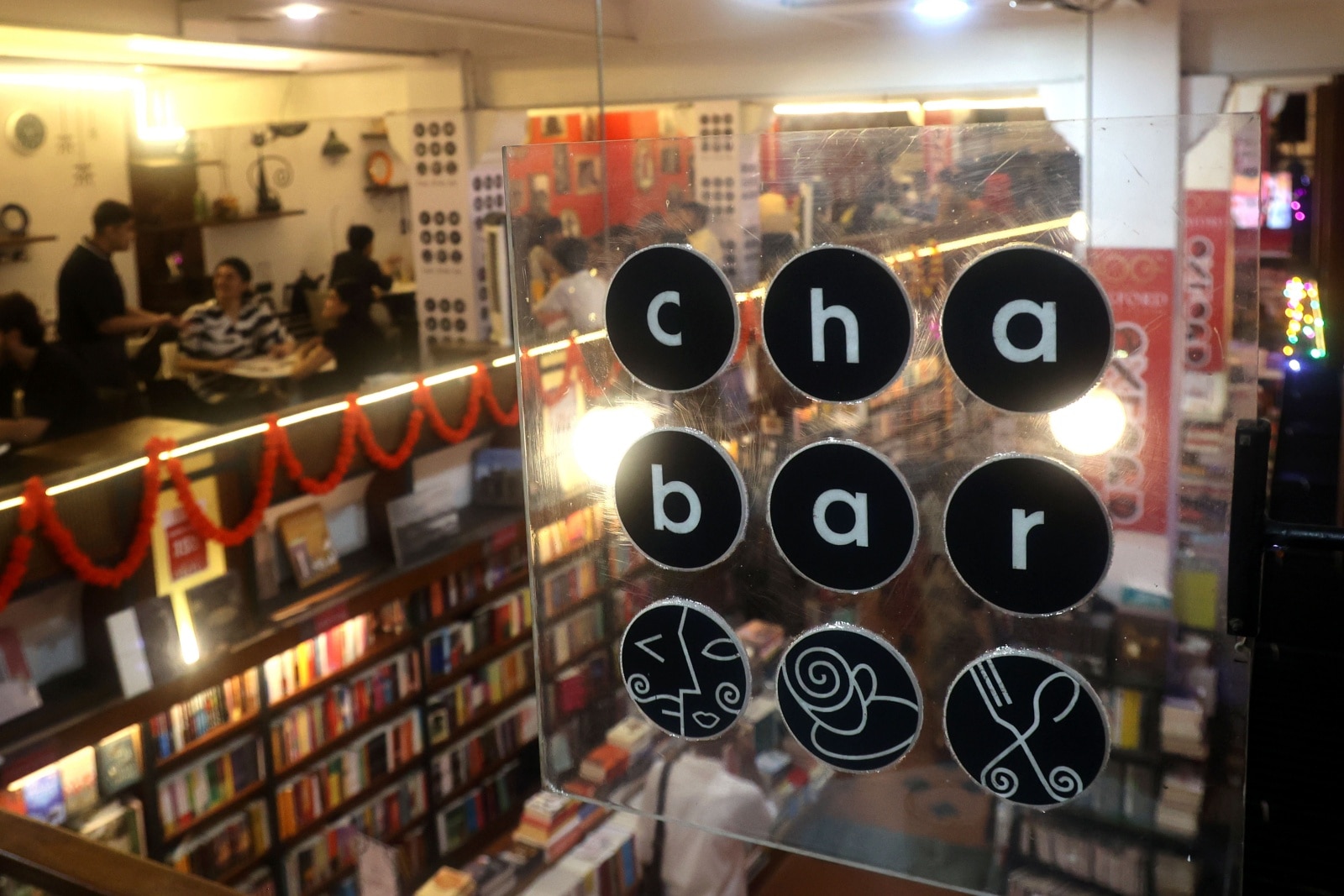 Paul’s idea of bringing tea out of Indian homes to a book café clicked. Over the next few years, she opened outlets in Mumbai, Delhi, Bhubaneswar, besides expanding the one in Kolkata. (Express photo by Partha Paul)
Paul’s idea of bringing tea out of Indian homes to a book café clicked. Over the next few years, she opened outlets in Mumbai, Delhi, Bhubaneswar, besides expanding the one in Kolkata. (Express photo by Partha Paul)





























